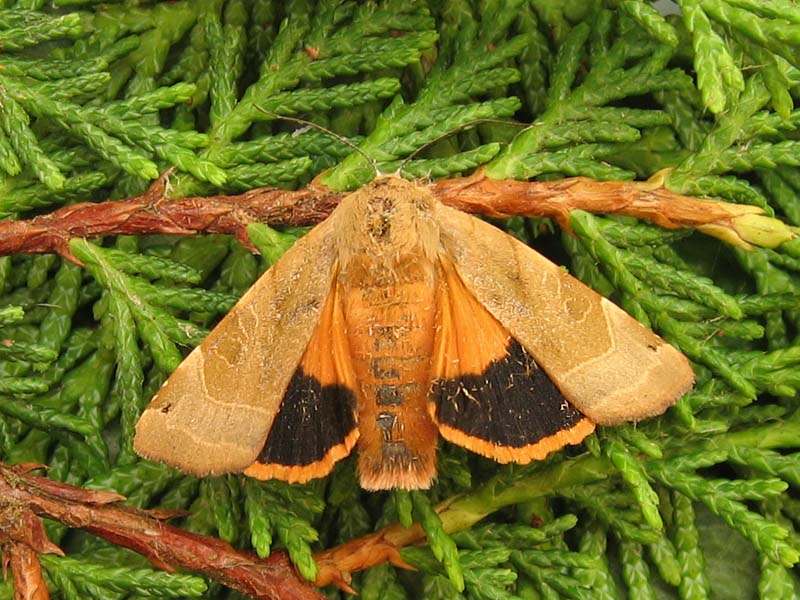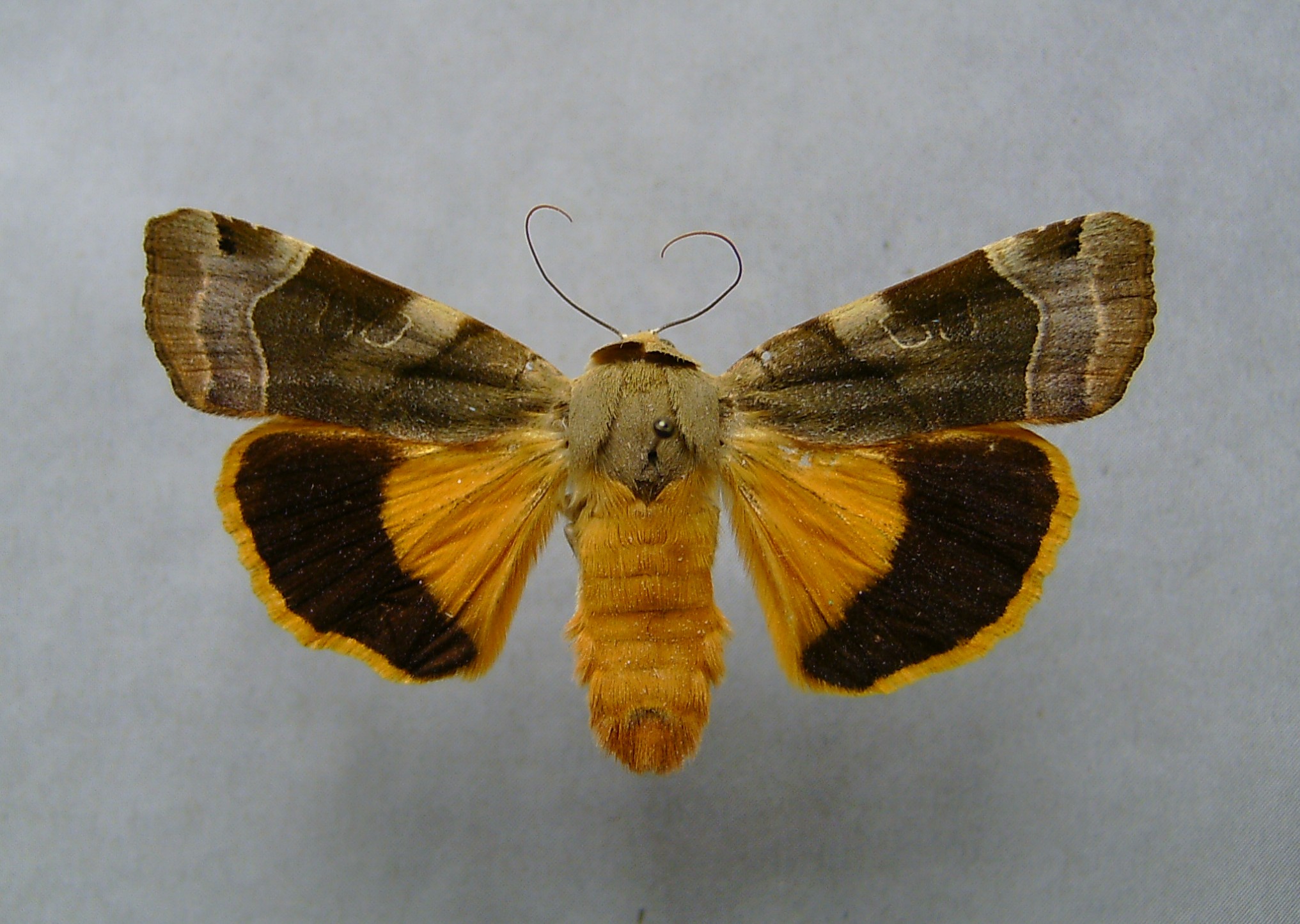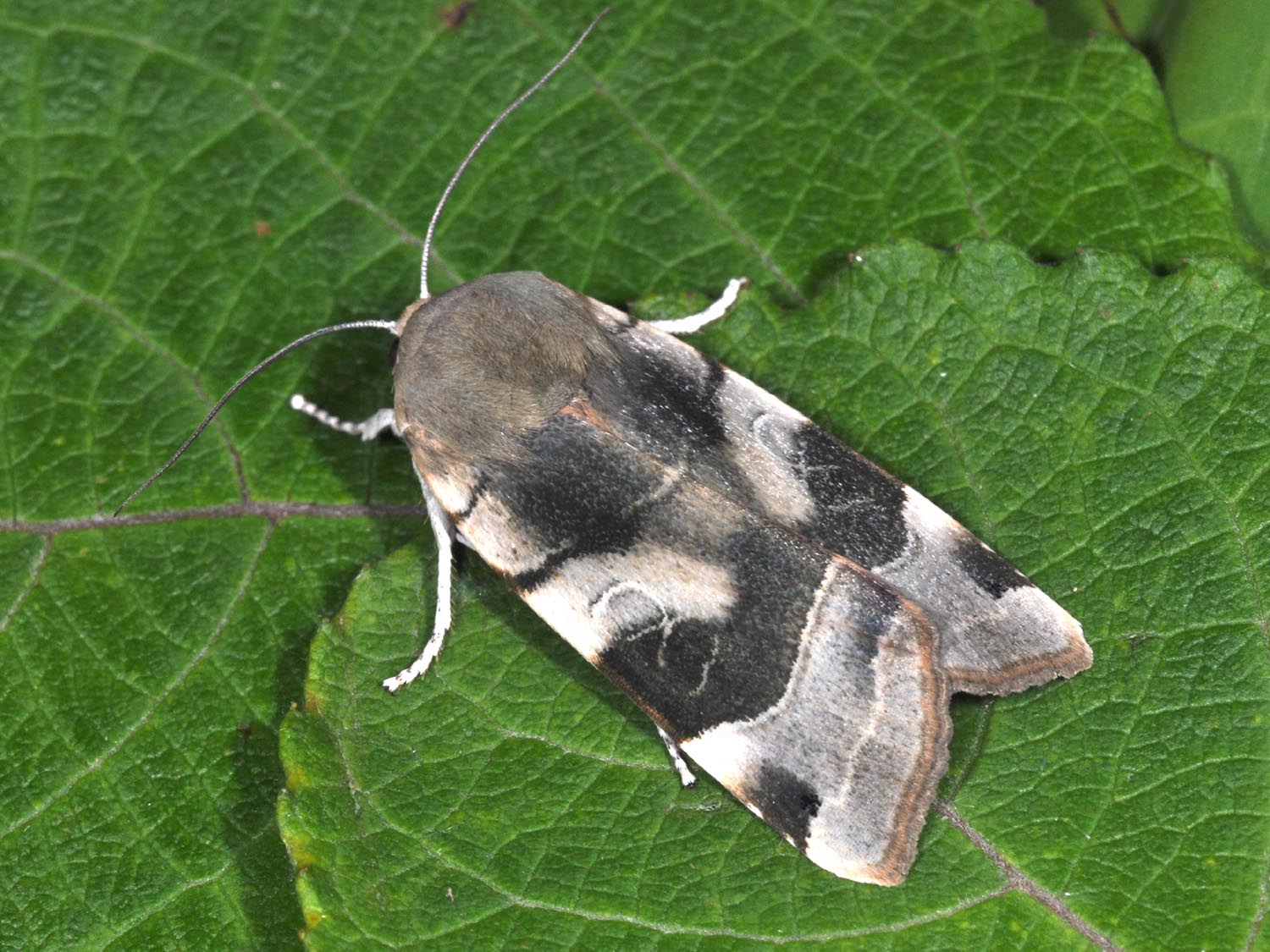Noctua fimbriata
Colorful Bandeule ( Noctua fimbriata )
The Colorful Bandeule ( Noctua fimbriata ), also called Yellow Bandeule, is a butterfly of the family of cutworms ( Noctuidae ).
- 5.1 Notes and references
- 5.2 Literature
Features
The wingspan is 45-61 mm, with males 45 to 57 mm on average, are slightly smaller than females ( 49-61 mm). The ground color of the forewing upper side varies greatly from ocher- yellow to reddish-brown to olive green to. The hind wings are tired of yellow color with shiny deep black and wide hem band. The individual forms with different colored forewings are designated as follows:
- Greenish forewing = f virescens Tutt.
- Dark olive forewing = f F. solani
- Reddish forewing = f rufa Tutt.
- Brown forewings = f brunnea Tutt.
- Blackish forewings = f obscura Lenz
The upper and lower sides of the abdomen are colored yellow.
The egg is flattened at the base, approximately hemispherical. It measures 0.4 to 0.5 mm in height and 0.7 to 0.75 mm in diameter. It is greenish. The surface of the upper two thirds of the ice are studded with 35 longitudinal ribs very pronounced, of which extend 11 to Mikropylregion. They are crossed by much finer, more closely spaced transverse ribs.
The caterpillar is up to 55 millimeters long. The color of the bead varies from yellowish-brown to brown to reddish- brown. The back line is light and relatively narrow; lined in the rear segments of bright spots. At the 12th segment with one transverse, bright -lined black spot is formed. Typically, the black spots are behind the spiracles.
The relatively short doll is reddish brown. It has a cremaster with two long spines.
Similar Species
The housemother ( Noctua pronuba ) has only a narrow black fabric tape in contrast to the colorful Bandeule. Noctua tirrenica Biebinger, Speidel & Hanigk 1983 is slightly larger, on average, on average, slightly lighter and on the upper side of the hind wing the black band is a bit straighter than in N. fimbriata. Leg. fimbriata is greater than N. tirrhenica the black box on the underside of the front wing; it extends from the core 1 to the dorsum, whereas in N. tirrhenica the field between core 1 to the dorsum is yellowish.
Geographical distribution and habitat
The species is widespread in Europe. To the south extends the distribution area to southern Italy, southern Spain and the Balkan Peninsula, in the north to southern Scotland and southern Scandinavia and then across Russia to the Urals. In the east it extends across Asia Minor, the Caucasus region, up to Turkmenistan and Siberia (Novosibirsk ). The species is also known as a migrant moths and can therefore also be found far outside the actual living space.
The species prefers to live on warm slopes, mixed forest edges, meadows and parklands. In Southern Europe the way rises to 2000 meters (after Forster and Welfare to 2500 meters). The course of the southern boundary is the Mediterranean area suspected what has so far been insufficiently studied on the basis of similarity with Noctua tirrenica.
Way of life
It makes a generation in whose moth fly very extended from June to September. Individual moths in late May already encountered or can even fly in October. The nocturnal moths come to artificial sources of light and bait. In hot summers, the moths insert a summer break. A female can lay up to 2500 eggs. The caterpillars appear in September, overwinter them and continue the development in May of the following year. They feed on various herbaceous plants and deciduous trees:
- Yellow Lady's Slipper ( Cypripedium calceolus )
- Colorful Iris (Iris variegata )
- Aspen (Populus tremula )
- Goat Willow (Salix caprea )
- Stinging nettle (Urtica dioica)
- Rumex dock ( Rumex obtusifolius )
- Berberis thunbergii
- Blackberry (Rubus fruticosus agg. )
- Creeping Cinquefoil ( Potentilla reptans )
- Common Agrimony ( Agrimonia eupatoria )
- Salad Burnet ( Sanguisorba minor)
- Blackthorn (Prunus spinosa)
- Scotch broom ( Sarothamnus scoparius )
- Grapevine (Vitis vinifera )
- Common Dogwood (Cornus sanguinea )
- Heather ( Calluna vulgaris)
- High (Primula elatior )
- Cowslip (Primula veris )
- Common ash (Fraxinus excelsior)
- White bedstraw ( Galium album )
- Meadows - bedstraw ( Galium mollugo agg. )
- Barnacle bedstraw ( Galium aparine )
- Yellow Archangel ( Lamium galeobdolon )
- Red Honeysuckle ( Lonicera xylosteum )
- Coltsfoot ( Tussilago farfara )
- Dandelion (Taraxacum officinale)
The caterpillars often climb several meters high in bushes and trees. In the 19th century, was even reported a harmful effect in vineyards. The caterpillars pupate in the soil.
Endangering
The Colorful Bandeule is not in danger almost everywhere and often in Germany.









